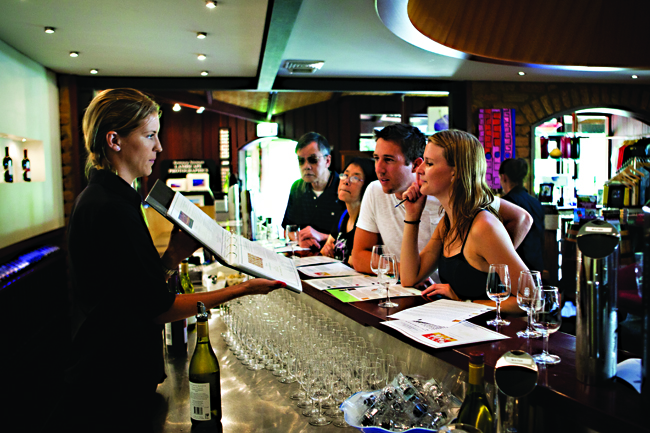Years ago, I helped a friend move house and was gifted a small bottle of dessert wine from their dusty liquor cabinet. I imagined how far gone it was, and it looked almost fluorescent. Nonetheless, I took it home where it gradually moved towards the back of my own liquor cabinet for a few more years. One rainy day a friend spotted up the back and suggested that it could be amazing, so we opened it. And "wow!", it wasn’t overly sweet, as I expected, and had an incredible mouthfeel. It was was almost perfectly agreeable in its complexity and flavours and still, years later, I have fond memories of that little bottle of liquid gold.
Being a fungus, it feels difficult to talk about the role of botrytis mould in winemaking without freaking people out. It may be more helpful to think of botrytis as belonging to the mushroom family or as playing a similar role to penicillium glaucum, also a mould, used in making gorgonzola cheese.
You may also be disinterested in sweet wine, however, not all sweet wines are the same and some of them are available in cellar doors waiting to develop into hidden gems tucked away in the back of people’s cellars.
Botrytis cinerea is visible in the vineyard as a blue-grey film on the berries. Its influence in the vineyard may, or may not, be a good thing but when present in desirable quantities, is helpful. In the right conditions, leech moisture from the grapes, producing complex and intense apricot, orange peel and marmalade flavours. These unique flavours are highly prized and an important component of some of the world’s most expensive wines, hence botrytis is sometimes referred to as the "noble rot". Besides concentrating sugar in the juice, botrytis enhances the glycerol content, adding smooth and viscous qualities.
Too much botrytis in the must (fermenting grape juice), however, slows the fermentation process and impacts the wine’s clarity by inhibiting the precipitation of colloidal materials, such as tannins and proteins. The colour of wine may also be negatively impacted, due to the presence of laccase, a sulphur dioxide resistant enzyme derived from botrytis that causes phenols to oxidise. In the vineyard, if botrytis takes hold at the wrong stage of development such as when buds and berries are emerging when moisture and temperature levels are simultaneously high, whole bunches of grapes will rot on the vine, rendering the crop useless. Therefore, viticulturists must take care to manage the levels of this somewhat friendly fungus in their crops throughout the growing season.
Climatic conditions play a big part in whether the presence of botrytis is a help or a hinderance in the vineyard. Ideally, high humidity interspersed with cooler weather, limits the growth of botrytis, causing a moderate concentration of sugar in the fruit. However, if that humidity lasts for a week or more, botrytis will bloom and break through the skin of the berries, making the influence of botrytis too overpowering and turning the berries to mush.
In hot, dry vineyard areas of Australia, the microclimate is not naturally conducive to botrytis growth. However, excellent results have been produced in these regions from spraying botrytis spores onto vines. This has a positive effect in these regions because of the subsequent dry conditions, however, would not be used in the Margaret River wine region because of high late-season rainfall.
In some cases botrytis is applied to unaffected grapes after they are picked and then climate-controlled to achieve the desired level of mould development. This considerably adds to the already high cost of producing sweet wines. Production of wine using grapes colonised by botrytis is more expensive because the yield lowered by as much as 75 per cent due to dehydration of the berries. In addition, numerous risks including high volatile acidity caused by acetic acid bacteria, give winemakers cause to pay extra attention while making wine with botrytis.
In the Margaret River wine region, a popular style of wine that features botrytis is known as cane cut. Winemakers cut fruiting canes and leave them to hang while the sweetness and flavour of the berries becomes concentrated. Cane cut wines can be made from many different varietals and is a labour of love for many winemakers. The resulting mini-sized bottles of joy are a delicious finale to special dinners or cheese platters and are likely to cellar very well. Securing a few of Margaret River’s ‘noble stickies’ is a great investment, either to drink now or save for a rainy day.
At the time of writing, patrons on our Full Day Gourmet Wine & Dine Tour and our Half Day Gourmet Wine Tour can purchase a 2019 Cane Cut Viognier from Xanadu or a 2018 Cane Cut Semillon from Voyager Estate. Keep an eye out for a new release from Cape Grace as their 2019 Cane Cut Chenin Blanc is sold out.
